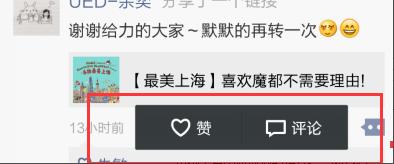Android LayoutInflater
Posted liguangsunls
tags:
篇首语:本文由小常识网(cha138.com)小编为大家整理,主要介绍了Android LayoutInflater相关的知识,希望对你有一定的参考价值。
本文讲述什么是 LayoutInflater。有何作用。使用场景。以及与 setContentView() 的差别。
应用案例请參见我的还有一篇博文《Android PopupWindow 仿微信点赞和评论弹出框》。
1. LayoutInflater 是什么
LayoutInflater 是一个抽象类(abstract class)。继承 Object 。
1.1 官方定义
下面翻译自 android 官方文档对 LayoutInflater 的 Class Overview 描写叙述:
把 res/layout/ 中的布局文件实例化成相应的 View 对象。不能直接使用,而要通过 getLayoutInflater() 或 getSystemService(Class) 得到,通过这两个方法得到的 LayoutInflater 对象才是绑定到当前 Context 并且在当前硬件设备上正确配置好的。
比如:
LayoutInflater inflater = (LayoutInflater)context.getSystemService(Context.LAYOUT_INFLATER_SERVICE);假设你想为你自己的View创建还有一个LayoutInflater,能够使用LayoutInflater.Factory。首先调用cloneInContext(Context)函数来复制一个已经存在的ViewFactory。然后再调用setFactory(LayoutInflater.Factory)方法。
因为性能原因,view扩展极大地依赖于在编译期间对XML文件的预处理。因此,如今还不能在执行时通过XmlPullParser来使用LayoutInflater。它仅仅仅仅能使用XmlPullParser中返回的已经编译过的资源文件(R.something 索引的文件文件)。
1.2 通俗定义
将 res/layout/ 中的布局文件,转成相应的 View 对象,以便对该 View 对象进行兴许操作,如加入数据、更改属性、加入父或子View 等。
2. LayoutInflater 有何作用
一个字,动态载入 layout。
动态载入是指。在应用执行过程中进行载入。

3. LayoutInflater 在何时使用
在业务逻辑中。我们总要对各种 View 对象(如TextView,ImageView,ListView等)做各种操作(如更改属性)。而操作这些 View 对象的前提是 View 所在的 layout 文件已经被载入,而载入的方式有两种:
- Activity.setContentView(R.layout.some_layout),这是比較常见的一种方式,一般在重写的 onCreate() 方法中完毕。
- LayoutInflater.inflate(R.layout.some_layout)。该方法返回一个 View 对象。即 some_layout 对象的 Layout 对象或某个详细的 View 对象(TextView,ImageView,ListView);
待 some_layout (注意:some_layout.xml 中能够仅仅有一个 View 控件。也能够是一个像 LinearLayout 或 RelativeLayout 之类的 Layout)载入完毕。就生成了一棵视图树,对于视图树中的 View。我们能够通过 findViewById() 获得,然后进行各种兴许操作。
比如我们熟知的微信朋友圈点赞功能(详见我的还有一篇博文《Android PopupWindow 仿微信点赞和评论弹出框》),点击后弹出的那个窗体(PopupWindow)就适合使用inflate()填充layout:

4. LayoutInflater 怎样使用
有3种方式获得 LayoutInflater 实例:
LayoutInflater mInflater = getLayoutInflater();LayoutInflater mInflater =(LayoutInflater)context.getSystemService(Context.LAYOUT_INFLATER_SERVICE);LayoutInflater mInflater = LayoutInflater.from(context); 推荐使用另外一种,查看源代码可知其它两种终于也是调用另外一种方式。
获得实例后,载入 layout 文件:
View view = mInflater.inflate(R.layout.some_layout, parent, false);当中。view 可能是一个 View(TextView,ImageView,ListView 等),也可能是一个 Layout (如 LinearLayout 或 RelativeLayout 等)。
相应的。则有例如以下操作:
TextView tv = (TextView) mInflater.inflate(R.layout.some_layout, null, false);或
View rootView = mInflater.inflate(R.layout.some_layout, null, false);
TextView tv = rootView.findViewById(R.id.tv);下面是一个摘自 stackoverflow 上关于 listview 的样例:
list_layout.xml :
<LinearLayout xmlns:android="http://schemas.android.com/apk/res/android"
android:layout_width="match_parent"
android:layout_height="wrap_content"
android:orientation="horizontal" >
<TextView
android:id="@+id/field1"
android:layout_width="0dp"
android:layout_height="wrap_content"
android:layout_weight="2"/>
<TextView
android:id="@+id/field2"
android:layout_width="0dp"
android:layout_height="wrap_content"
android:layout_weight="1"
/>
</LinearLayout>schedule_layout.xml :
<?xml version="1.0" encoding="utf-8"?>
<TextView xmlns:android="http://schemas.android.com/apk/res/android"
android:layout_width="0dp"
android:layout_height="wrap_content"
android:layout_weight="1"/>重写 Adapter 的 getView() 方法:
@Override
public View getView(int position, View convertView, ViewGroup parent) {
LayoutInflater inflater = activity.getLayoutInflater();
View lst_item_view = inflater.inflate(R.layout.list_layout, null);
TextView t1 = (TextView) lst_item_view.findViewById(R.id.field1);
TextView t2 = (TextView) lst_item_view.findViewById(R.id.field2);
t1.setText("some value");
t2.setText("another value");
// dinamically add TextViews for each item in ArrayList list_schedule
for(int i = 0; i < list_schedule.size(); i++){
View schedule_view = inflater.inflate(R.layout.schedule_layout, (ViewGroup) lst_item_view, false);
((TextView)schedule_view).setText(list_schedule.get(i));
((ViewGroup) lst_item_view).addView(schedule_view);
}
return lst_item_view;
}上述程序中,先载入 listview 每行的布局文件 schedule_layout.xml,然后动态的向每行布局文件里动态的加入一个 schedule_view,从而完毕 listview 每行的布局和数据填充。
5. 关于參数
5.1 layout 根节点为 merge
在 inflate 以 merge 为根节点的 layout 时。attachToRoot 必需要为 true,否则会报错:FATAL EXCEPTION: main android.view.InflateException: merge can be used only with a valid ViewGroup root and attachToRoot=true。
5.2 root 參数不要为 null
root 不要为 null。详细原因见《Layout Inflation as Intended》 。
并且,假设 root = null,inflate 进来的 view 的 LayoutParams 是 null,即 view 的 width、height、margin 等所有失效。
下面规则都是在 root 不为 null 的前提下。
inflate 方法有中形式:
View inflate(@LayoutRes int resource, @Nullable ViewGroup root, boolean attachToRoot)
和
public View inflate(@LayoutRes int resource, @Nullable ViewGroup root) {
return inflate(resource, root, root != null);
}另外一种形式中,attachToRoot 的值取决于 root 參数是否为 null。
当 attachToRoot = true 时该 view 会被加入到 root,故不能再显式调用 addView() 否则抛异常。假设想通过 addView() 将 inflate 进来的 view 加到 root,则必需要将 attachToRoot 设置为 false。
6. 与 Activity.setContentView 的差别
setContentView() 方法则隶属于 Activity,而 LayoutInflater.inflate() 则没有此限制。
7. 參考
- http://developer.android.com/intl/zh-cn/reference/android/view/LayoutInflater.html
- http://www.cnblogs.com/top5/archive/2012/05/04/2482328.html
- http://xcynqy123.iteye.com/blog/1402956
- http://stackoverflow.com/questions/10493729/custom-view-not-inflating
- http://stackoverflow.com/questions/11029192/inflating-a-xml-layout-in-a-custom-view-class
- http://www.devdiv.com/android_layout_-blog-20-9342.html
- http://stackoverflow.com/questions/5026926/making-sense-of-layoutinflater
- http://www.cnblogs.com/shitianzeng/articles/2323427.html
- http://stackoverflow.com/questions/3477422/what-does-layoutinflater-in-android-do
- http://erbo2008.iteye.com/blog/1542733
- https://possiblemobile.com/2013/05/layout-inflation-as-intended/
以上是关于Android LayoutInflater的主要内容,如果未能解决你的问题,请参考以下文章